- Destinations
- Travel Styles
- About Us
- Contacts
- Destinations
- Travel Styles
- About Us
Lost among the lush vegetation of the Angkor Archaeological Park, Preah Khan fascinates with its large expanse, mysterious atmosphere, and little-known history. Less visited than the site's most famous temples, it offers a tranquil experience, away from the crowds. Behind its walls covered with roots, the past still breathes through the stones. One enters out of curiosity and leaves with the feeling of having crossed a forgotten world. Its story begins in the late 12th century, at the height of the Khmer Empire's power, which helps explain what makes this temple so unique.
The Preah Khan temple is located in the northeastern part of the Angkor Archaeological Park, about 4 km from the center of Siem Reap and 1 km northeast of Angkor Thom.
The name Preah Khan means "sacred sword." According to legend, a sacred sword, a symbol of royal power, passed down from king to king during coronation ceremonies, would have been kept here. A replica of this sword is still preserved today in the Royal Palace of Phnom Penh.
Often overshadowed by his "brother" Ta Prohm, Preah Khan nevertheless has a very special atmosphere. Less crowded, it offers a quieter and more contemplative environment, which for many travelers represents a great advantage.
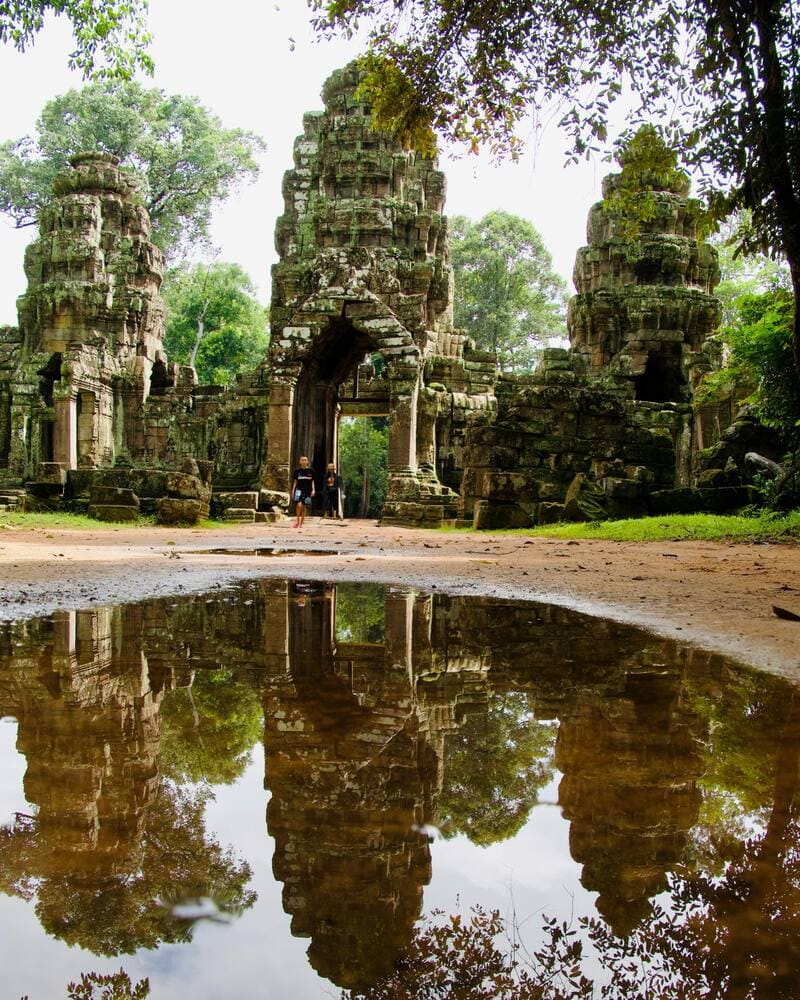
To visit the Preah Khan temple, it is necessary to buy a pass for the entire Angkor archaeological park. There are three types of passes:
>>>Note: The pass gives access to all the temples of the Angkor complex, not just Preah Khan.
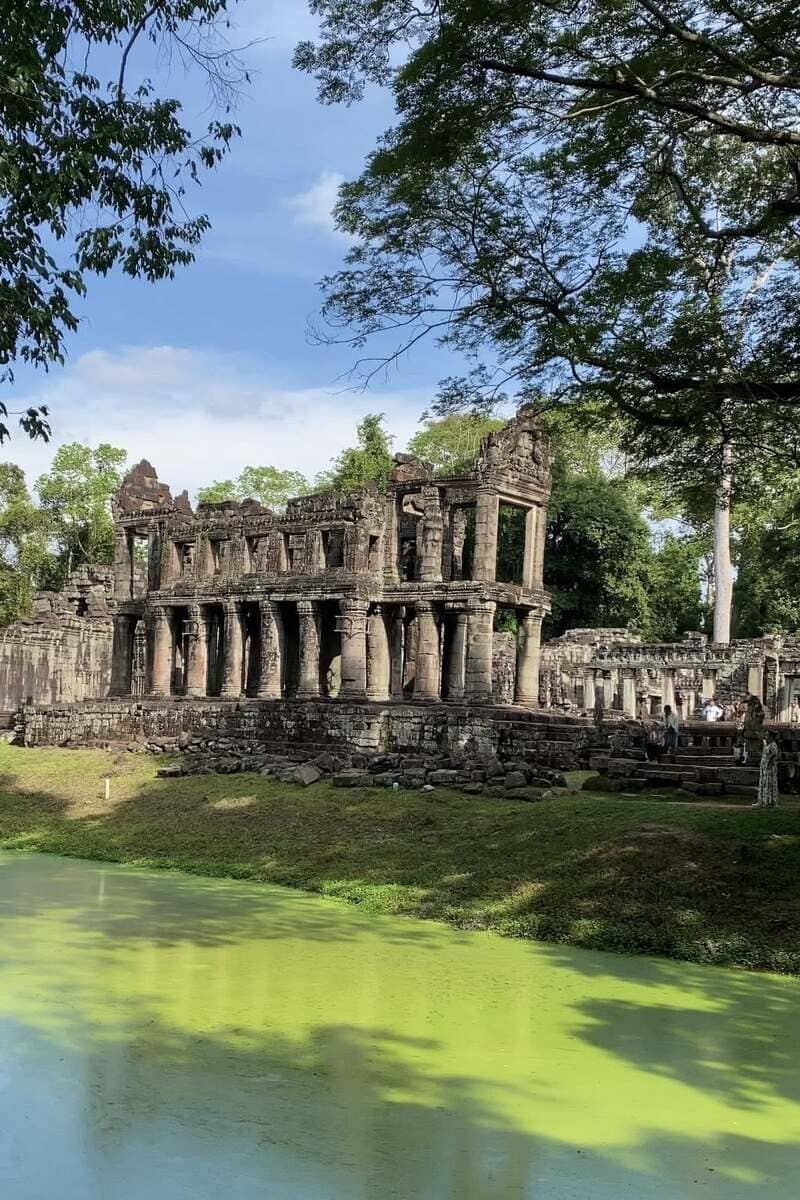
From the center of Siem Reap, it takes about 20 to 30 minutes by tuk-tuk to reach Preah Khan. The journey is simple: you usually follow the road to Angkor Thom and then continue to the northeast. It is also possible to go by bicycle or motorbike, a good option for independent travellers who want to enjoy the scenery during the tour.
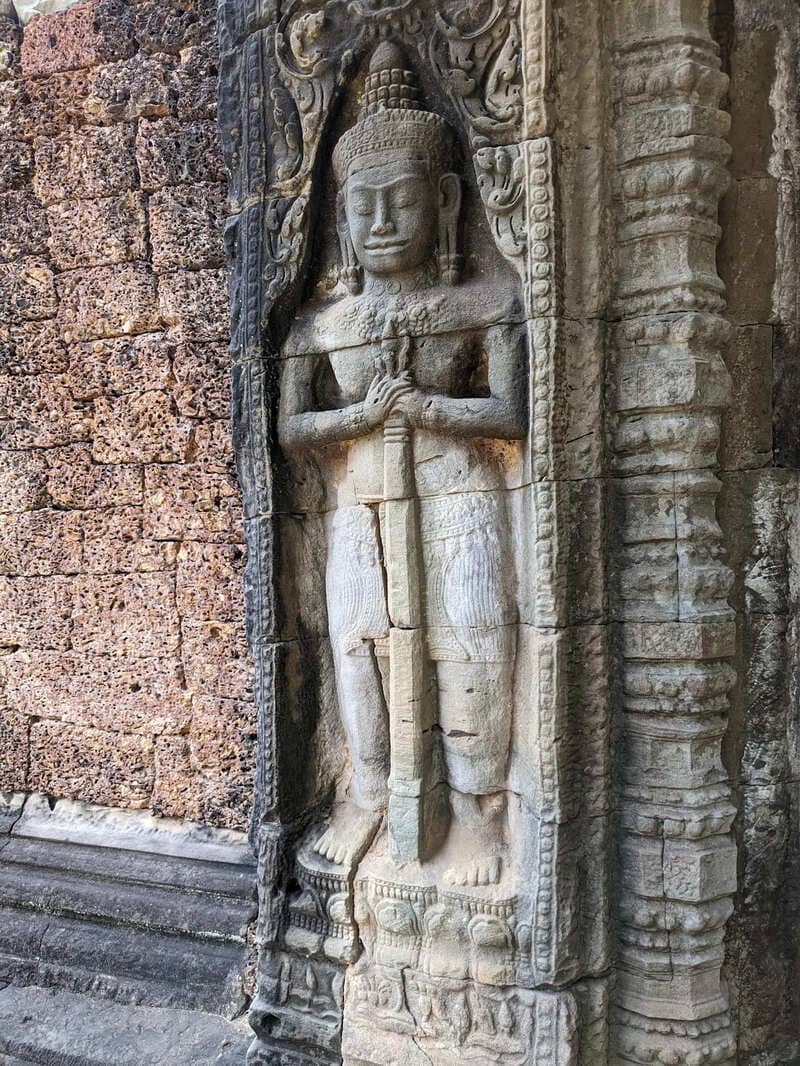
Preah Khan is very close to other temples in the northern circuit, which allows you to group several visits into half a day or a full day. Among the nearby temples that you can't miss:
The main entrance to Preah Khan Temple is located to the east, at the end of a wide stone bridge that crosses a moat. On both sides of the bridge rise two rows of statues: on one side, serene divinities; on the other, threatening demons. All together they hold the serpentine body of a huge Naga, the sacred multi-headed serpent. This scene symbolizes the passage from the world of men to the world of the gods.
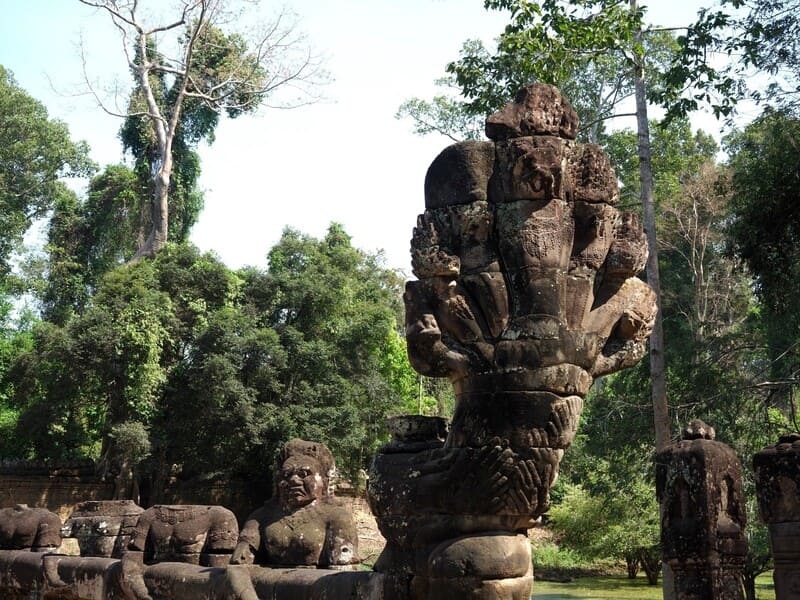
Just after this monumental entrance, you discover an impressive series of giant Garudas, half-man, half-bird creatures, from Hindu mythology and known to be the mounts of the god Vishnu. There are a total of 72, each measuring approximately 4.5 meters tall and positioned around the outdoor enclosure. Each Garuda holds firmly the head and tail of a Naga, in a posture of shocking mythological domination.
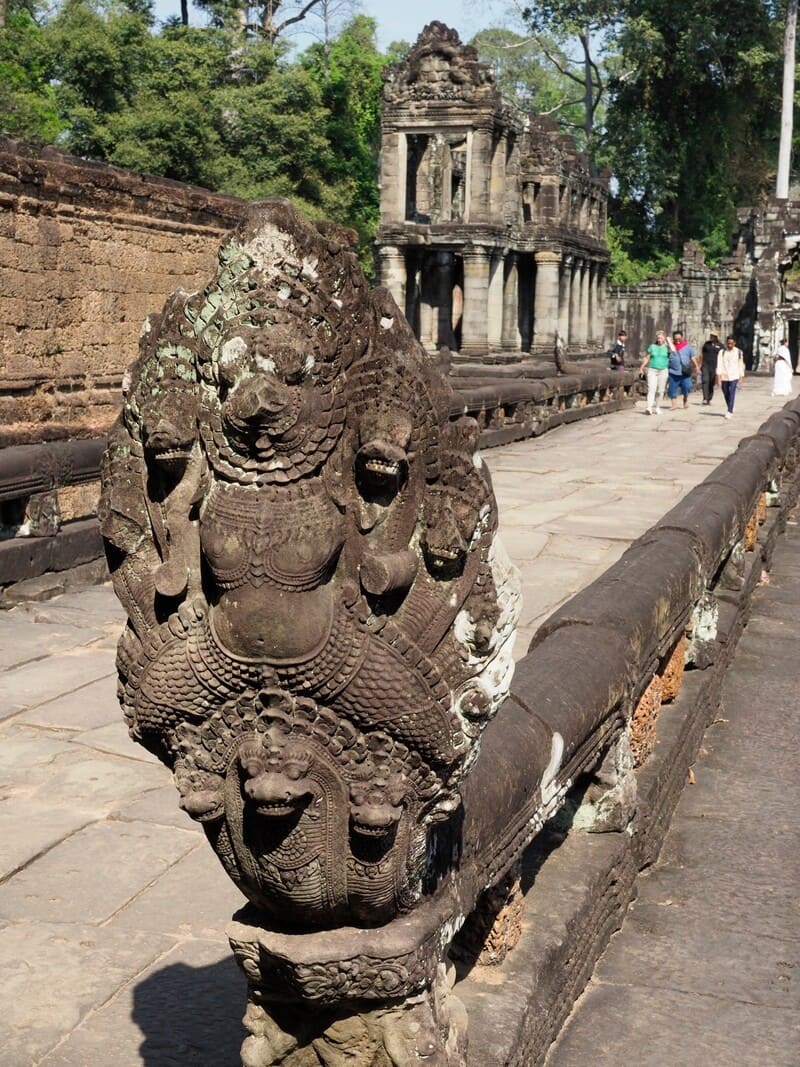
Crossing the east gate, you enter the fourth enclosure, an area that was formerly intended for the daily activities of the monks and servants of the temple. You can still see the Dharma Sala, or "House of Fire," which would have housed a sacred flame, as well as a two-story library, a rare structure throughout the Angkor complex where the sacred sword Preah Khan is said to have been kept for a time.
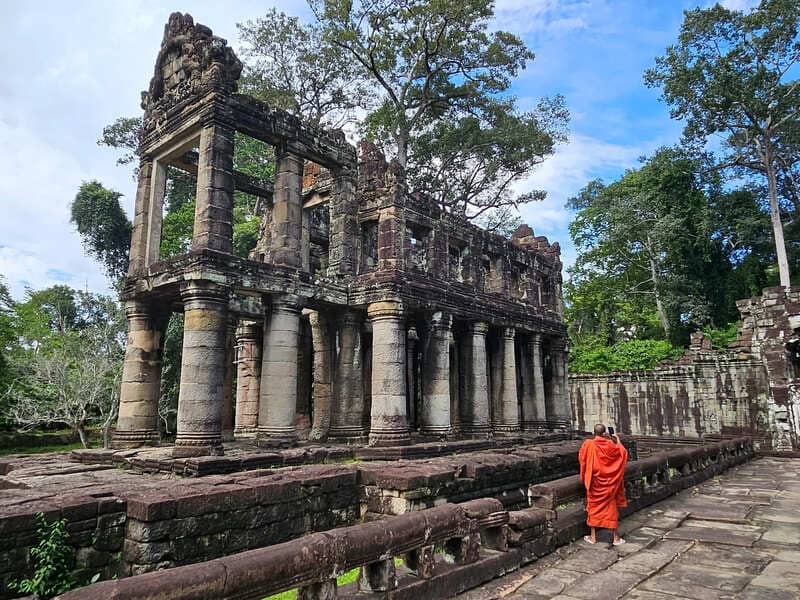
Further on is the gate of the third enclosure, one of the most elaborate constructions in the place. It features three towers connected by a long corridor of more than 90 meters. Then you enter the ballerina's room, a large vaulted space decorated with eight lintels that represent apsaras, the celestial dancers. In the past, this space was probably used for ritual offerings, sacred dances, and royal ceremonies.
Near the central sanctuary stood a sandstone stele engraved with Sanskrit texts. These inscriptions told the story of the temple's founding, the divinities venerated, and their role within the empire. Today, this stele is preserved in Phnom Penh.
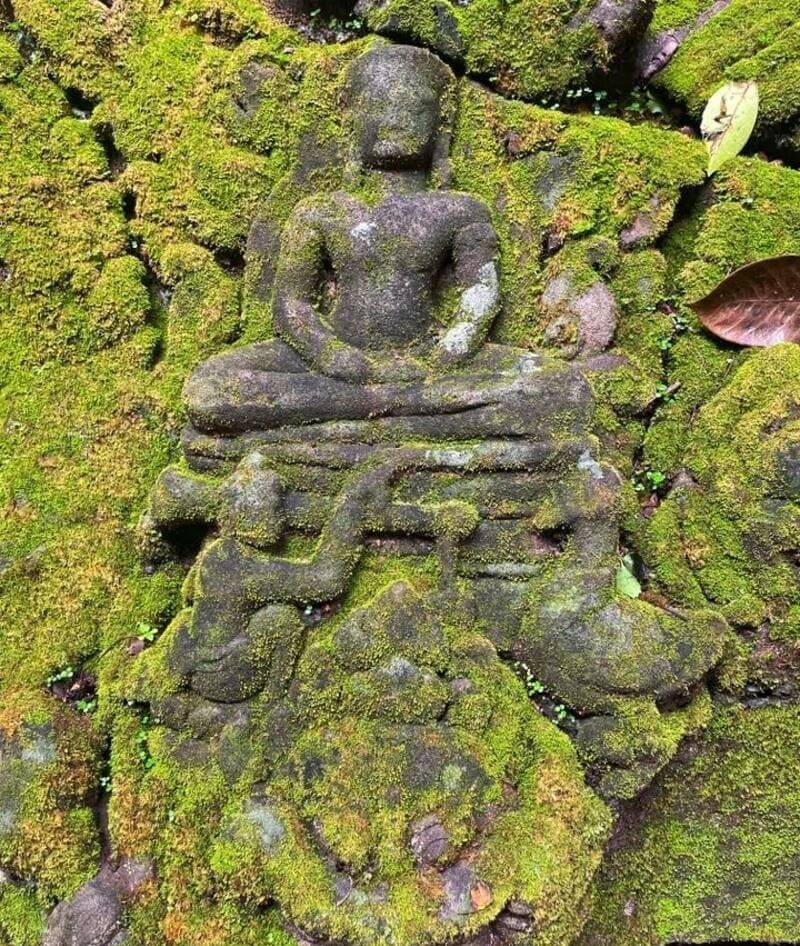
The main shrine constitutes the spiritual heart of Preah Khan. There was a statue representing the father of King Jayavarman VII in the form of a divinity. Today, that space houses a simple stupa dating back to the 16th century. Three small temples surround the central tower: the northern one is dedicated to Shiva, the southern one pays homage to deceased kings and queens, and the western one is dedicated to Vishnu.
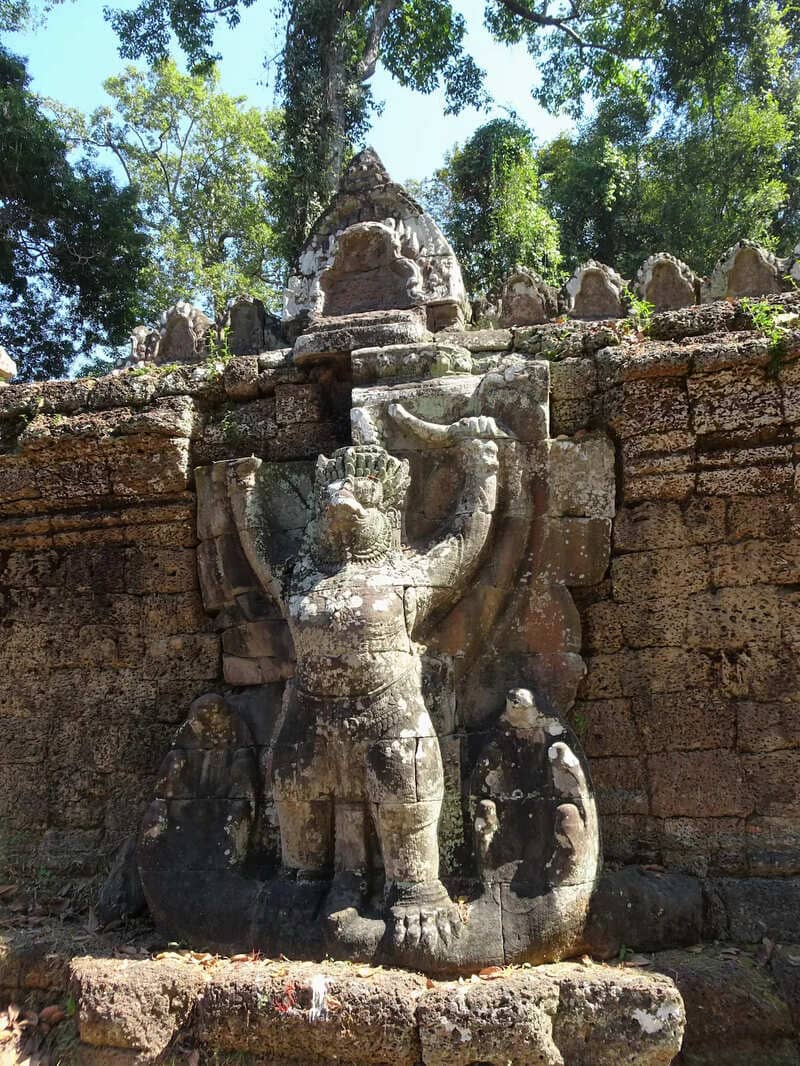
Carved into the stone of Preah Khan's ancient walls, this majestic Garuda embodies protection, courage, and divine power according to Khmer mythology. Half man and half bird, the Garuda is a celestial creature from Hindu and Buddhist legends. It is often depicted as the mount of the god Vishnu. With his wings spread and his gaze penetrating, he was considered the guardian of the temple, responsible for chasing away negative forces and preserving the spiritual balance of the sacred place.
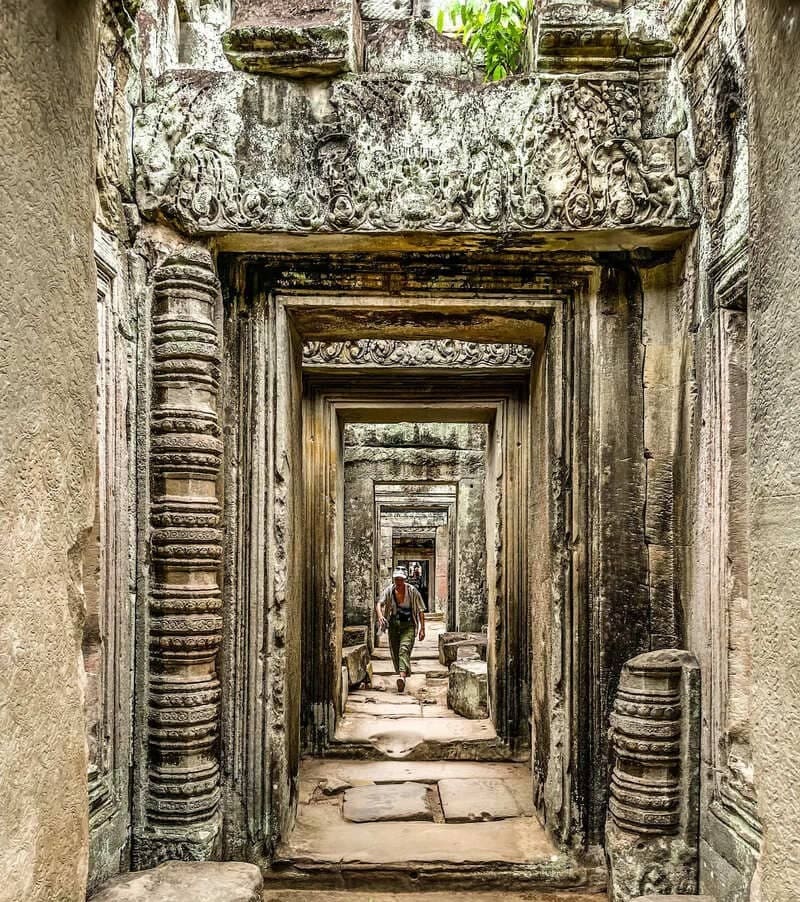
Preah Khan is not simply a temple. Under the reign of King Jayavarman VII, this place became a unique multifunctional complex: a Mahayana Buddhist monastery, a university with more than 1,000 teachers, a worship center dedicated to 430 Hindu divinities, a dance school with hundreds of professional dancers for ceremonies, a royal palace, an administrative and agricultural center, and for a time, the provisional capital of the Khmer Empire.
The temple complex covers approximately 56 hectares, and once housed almost 100,000 people in the service of the site, a figure comparable to that of the great European cities of the Middle Ages. Here the king resided while Angkor Thom, his grandest capital, was being built.
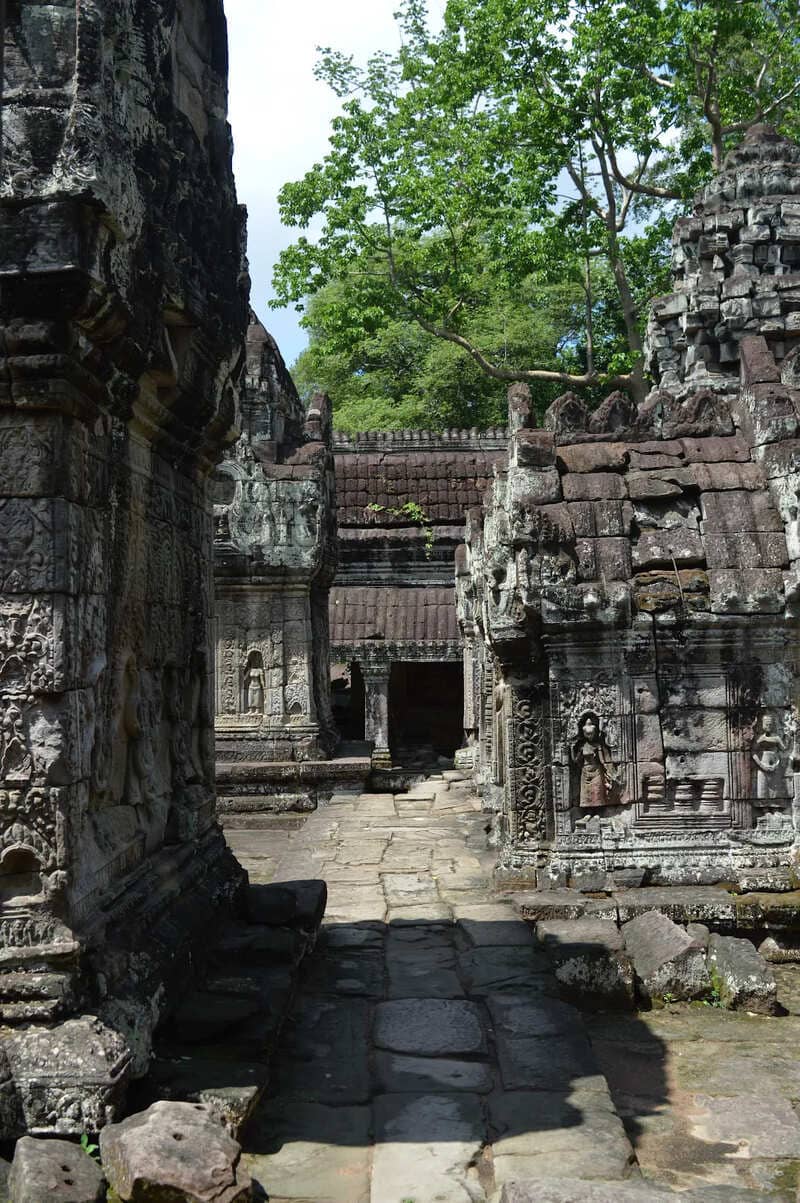
The architecture of Preah Khan bears many similarities to Ta Prohm, another temple dedicated to his mother, while Preah Khan was erected in honor of his father. Today, the temple retains its wild and mystical appearance, with partially cleared areas for visitors, while the jungle continues to envelop much of the site, preserving its authenticity.
Although Preah Khan is located on a popular tourist route, it's wide enough that you can find quiet corners, away from the crowds. Don't miss the massive tree roots at the east entrance, home to one of the largest entrances with five gates, and explore the less crowded southern area of the temple to truly experience an explorer among ancient ruins and dense jungle.
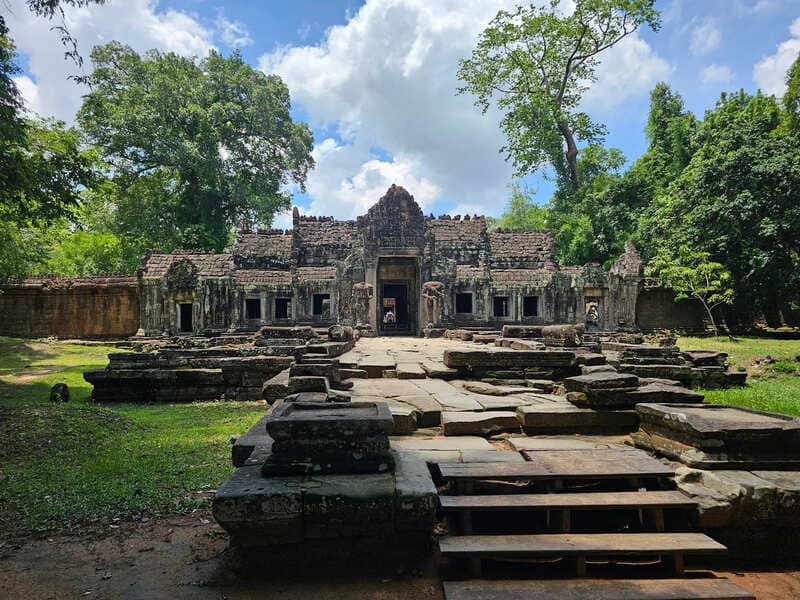
Still a sacred place in the heart of the forest,
Since 1991, the temple of Preah Khan has been protected by the World Heritage Organization, which has chosen to preserve it in its current state following the principle of "respect for authenticity", avoiding any excessive restoration to preserve the historical integrity of the site. Today, Preah Khan is not just a religious monument, but a living testament to the political, cultural, and spiritual greatness of the Khmer Empire.
As you head west of the site, you'll find a small information center supported by the World Monuments Fund. This center presents detailed information about the conservation work done at Preah Khan for more than 20 years. Although the temple is in ruins, it remains a sacred place for the local inhabitants, who come to pray, make offerings and keep the memory of Preah Khan alive in the collective memory.
Exploring Preah Khan is also a way to see Angkor from another perspective. Siem Reap is not limited to Angkor Wat or Angkor Thom: there are other, quieter and sometimes forgotten temples that offer equally powerful experiences, at the crossroads between nature, silence and spirituality.
>>> Related Articles:
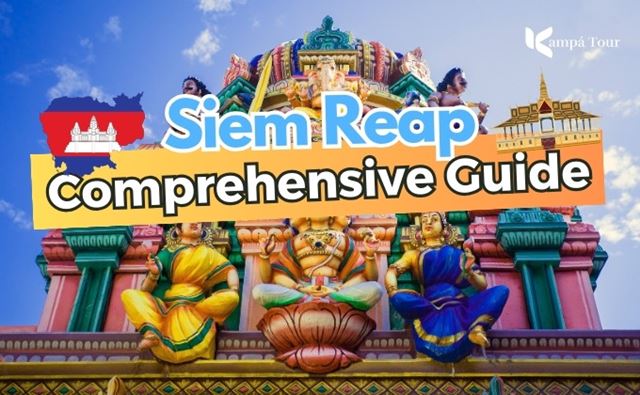
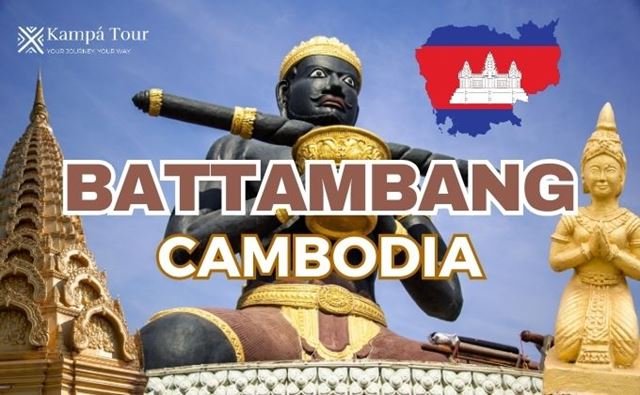
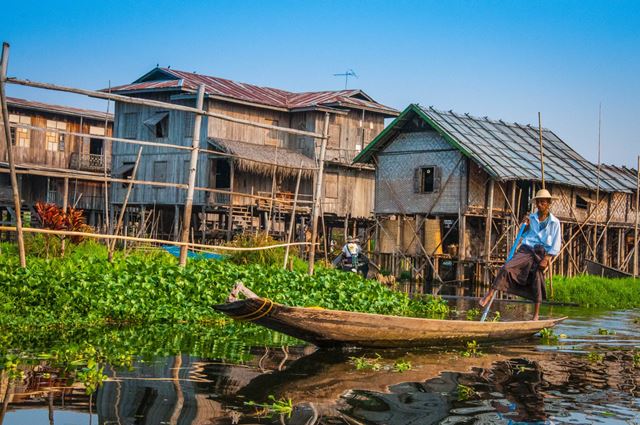
 The Essentials
The Essentials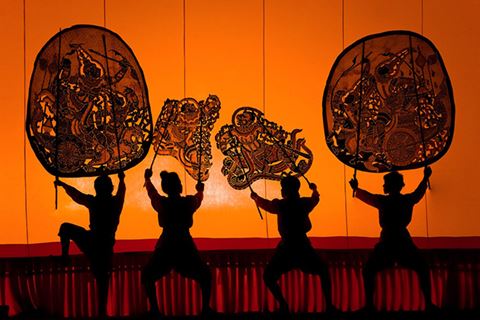 The Essentials
The Essentials The Essentials
The Essentials The Essentials
The Essentials